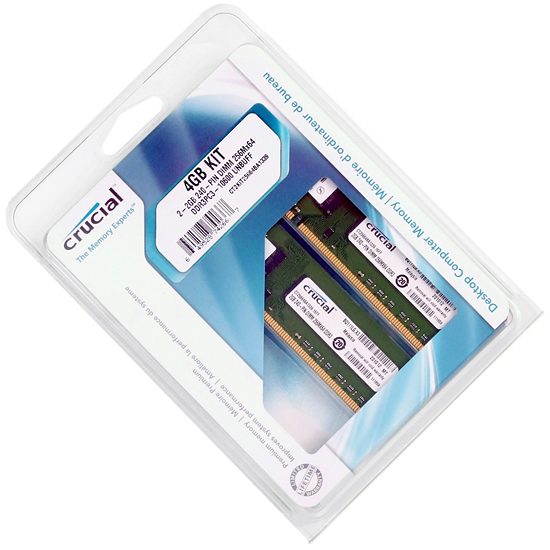Dual-Channel DDR3: Who Makes The Best 4GB Kit Under $150?
High-end RAM prices have fallen far faster than they have in the mainstream market, enticing mid-budget builders. As 4GB mainstream kits hover around $100, Tom’s Hardware asks the question “How much more can we get for a few dollars more?”
Crucial And G.Skill
Crucial CT2KIT25664BA1339 DDR3-1333 CAS 9
It might surprise the uninitiated to find Crucial’s unadorned DDR3-1333 modules in today’s lineup, but it’s not because the firm didn’t “get the message” about sending the best. We believe the most likely reason is that the same D9KPT memory chips are used for both standard grade and enthusiast-oriented Ballistix-branded parts. With little hope of winning a frequency race, these low-cost standard modules are at least in line to earn Crucial some recognition for its value.
Our experience with D9KPT-based memory shows that it operates best without heat spreaders, as was the case in its award-winning value coup.
Also available in triple-channel kits, these CT25664BA1339 modules default to DDR3-1333 CAS 9-9-9-24 using stock voltage. Many of Crucial’s competitors use similar default values, and we caution first-time readers that they may be shocked to see just how far these bare modules can be pushed.
G.SkillF3-16000CL9D-4GBTD DDR3-2000 CAS 9
G.Skill’s premium Trident series includes high-speed, low-latency, and even “beyond premium” high-speed/low-latency parts. These CAS 9 modules are amongst the most value-oriented parts in the series.
Three-layer extruded-aluminum heat spreaders visually distinguish the Trident series from G.Skill’s more traditional Ripjaws series.
Get Tom's Hardware's best news and in-depth reviews, straight to your inbox.
Also available in triple-channel kits, these F3-16000CL9-2GBTD modules include XMP-2000 values to ease configuration to DDR3-2000 CAS 9-9-9-28 in any XMP-enabled motherboard. Because even XMP settings require some user interaction through BIOS, the modules default to DDR3-1333.
-
neiroatopelcc And yet I would never recommend anyone to buy memory running faster than 1600mhz.Reply
Add another $50 and buy two cheaper ddr3-1600c9 sets instead. More beats faster.
-
ksa-_-jed the bottom line is there no big different worth the extra money.Reply
I think is better to stick with the 1600mhz -
jrharbort I'm still glad with my choice to stick with the crucial modules in all my builds for nearly a year now. Nice article, was very informative, but I don't think it will effect my overall choice on future builds.Reply -
mr_tuel I bought my OCZ 6GB 1600MHz triple-channel kit for $85 last May. It will now cost my ~$160 to buy another :-(Reply -
SchizoFrog What happened to Corsair and OCZ? This is just another article for you to advertise certain brands, shame on you Tom's...Reply -
neiroatopelcc I'm sure they're not present in the article, because they simply didn't want to send any modules in time.Reply
Besides, corsair is usually middle of pack, and ocz has compatibility issues on every second motherboard or something. Not the biggest of losses. -
madass "We recommend G.Skill’s Trident DDR3-2000 specifically for mid-budget overclockers who believe in the importance of memory speeds beyond those we’ve found to be beneficial to program performance."Reply
LOL
-
idisarmu 4gb is no longer the optimal capacity. RAM prices are going up component-wise. 4gb of DDR3 1600 was down to about 95-100 dollars at one point, but now the price has gone up $10-15. Meanwhile, the price of 2x4gb kits have gone down from about $420 to $260-300 (This is for ddr3 1333)Reply
I think that if someone is building a new PC, it is now better to invest in 8gb in a 2x4gb kit than it is to invest in 2x2gb. You will eventually upgrade to 8gb anyway (next year or in 2 years), so why don't you just buy the 8gb in 2 sticks for only a slight % increase of Cost/GB -
dalta centauri Here I am running 4gb of ADATA DDR2 ram at 800MHz and others have 250$ worth of ram in their computers. I think it's time to upgrade :DReply
(Darn, 300$ down the tube)




